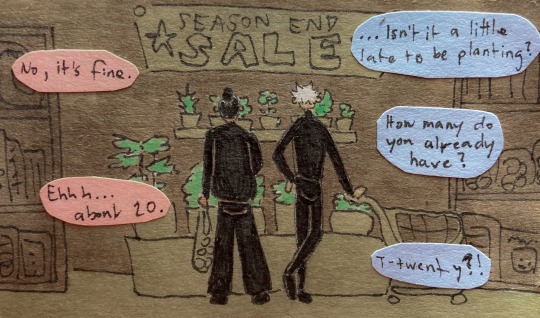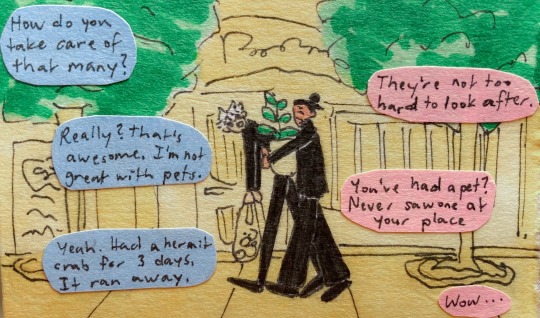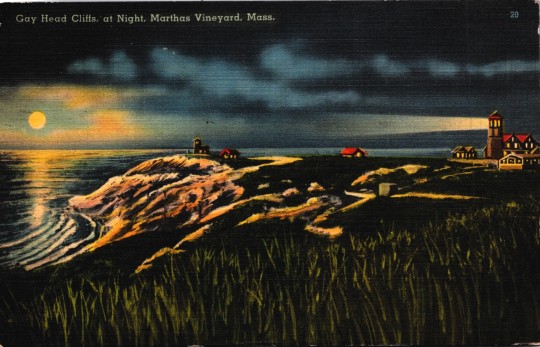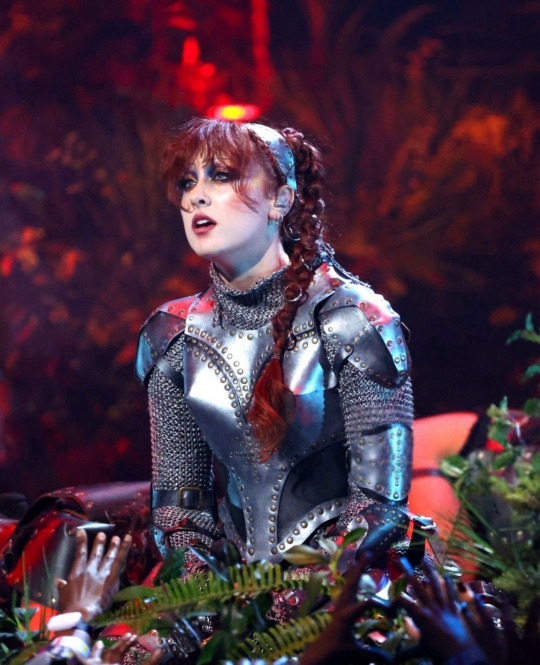Multi-Fandom/Interest Blog | {header art by fyxnz; icon adopted from 1forsorrow2forjoy on Deviantart} | sounddrive | 27+ | she/her/they/them | Ko-Fi: https://ko-fi.com/mayflypachyderm
Don't wanna be here? Send us removal request.
Text

satoru keeps bugging him to wear his clothes. gee i wonder why.
123 notes
·
View notes
Text




old satosugu, easy to love
286 notes
·
View notes
Text

Martha's Vineyard Gay Head Cliffs at Night Postcard 1944
@postcardtimemachine
14 notes
·
View notes
Text

derealization.
624 notes
·
View notes
Text
The fact that im getting raw dogged by life everyday. Don’t have any medication to take the edge off. Nor any addiction, I don’t even got a religion or spirituality to fall back on. Im facing this life stone cold sober every goddamn day??? Why???
148K notes
·
View notes
Text
Fun Chemistry With Ryan #1: The Discovery of Helium
Welcome to my new series, Fun Chemistry With Ryan, where I, a biochemist, discuss some chemistry topics that I personally find fun!
For the first installment of this series, I’ll be going over the discovery of helium. Let’s get right into it!
Helium is the second element in the periodic table, and it is considered to be the most unreactive element. The discovery of helium is particularly interesting because it was actually first discovered in space, not on Earth! It was discovered in 1868 by the French astronomer Jules Janssen during a solar eclipse.
Yes, that’s right, helium was discovered because of a solar eclipse!
Every element possesses its own emission spectrum, meaning the wavelengths of light emitted by this element. Think of emission spectra as elemental barcodes or fingerprints, in the sense that it is unique to each element, and can be used to identify it. For example, here is the emission spectrum of hydrogen:

In a time where chemistry methods were more rudimentary than today, emission spectra were one of the main methods used for the discovery of new elements. Although it wasn’t enough to characterize the element fully, it did give scientists pointers that there was an element out there they hadn’t discovered yet!
And that brings us to India in the year of 1868. The French astronomer Jules Janssen was observing a solar eclipse. He noticed while looking into the corona (the bright outer ring of light on the circumference of the sun), that there was an emission spectral line that didn’t belong to any of the elements known at the time.

The eclipse was crucial to this discovery, as in normal conditions, the glare of the sun makes the corona exceedingly difficult to observe. However, during this eclipse, the moon dimmed the sunlight just enough to allow Janssen to observe the emission spectrum of an unknown element. The moon gave him 7 minutes of darkness, which was enough time for him to know that there was an element present in the sun that hadn’t been discovered yet. Janssen did not go as far to name this element or even definitively say it existed. He still mailed his findings to the French Academy of Sciences, but his letter took a bit too long to reach Paris.

Emission spectra of hydrogen and helium. The yellow line down the middle was the “a-ha!” wavelength for Janssen.
Meanwhile, as Janssen’s letter made its way to Paris, an English astronomer by the name of Norman Lockyer made the exact same observation. He had figured out a way to observe the sun’s corona during the daytime, and found the same thing: spectral lines that did not belong to any known element at the time.
However, unlike Janssen, Lockyer took the leap of faith to not only say this element definitely existed, but went as far as naming it too: Helium, after the Greek god of the sun Helios, paying homage to the phenomenon that allowed its discovery.

Illustration of Lockyer.
The French Academy of Sciences decided to grant both Janssen and Lockyer joint credit for the discovery of helium. It wasn’t until 1895 that helium was discovered on Earth by Sir William Ramsey through isolating it from uranium ore, which releases helium as a component of radioactive decay.
I find helium fascinating, exactly because it was discovered in space 27 years before it was discovered on Earth! Not only that, but its discovery was made possible by an eclipse!
Alright, that’s it for the first installment of this series! Let me know if you like it, and if you have any requests for following episodes. Thanks for reading, if you’ve made it this far.
37 notes
·
View notes
Text
sorry i was researching the author of a victorian book about raising children and now i'm fascinated by her. clear my schedule we're talking about lydia maria child.
13K notes
·
View notes
Text

original sin 🍎
1K notes
·
View notes
Text

Call of the coyote
473 notes
·
View notes
Text
If your hair is shapeless “fluff” then it’s probably actually curly.
If your hair with no styling, and no air drying is “bushy” with a little bit of wave, it’s likely curly.
If you own a flat iron, your hair is probably curly.
If you grab a lock of hair and hold it between two fingers horizontally, and it sticks at a 180 degree angle without flopping over, it’s probably curly.
If you have done “e v e r y t h i n g” to tame “frizz” and soften your hair to be sleek and it resists all methods and looks like a 1980s anime cat girl… your hair is curly.
If volume is NOT your concern your hair is probably curly.
If you are more likely to describe your hair as “fur” than hair, it’s fucking curly.
Switch your washing methods for a curly method, and be amazed.
33 notes
·
View notes
Text










chappell roan & gerard way stage outfit parallels
chappell looks:
vmas, sept 11 2024 / hinterland, august 4 2024 / bonnaroo, june 16 2024 / hangout fest, may 18 2024 / coachella, april 12 2024
gerard looks:
corona capital mexico, nov 18 2022 / london, nov 2005 / detroit, sept 13 2022 / los angeles, oct 11 2022 (but first worn in nashville, aug 23 2022) / sydney, march 19-20 2023
PART 1/2
25K notes
·
View notes
Text
Also to be clear if you put the new Harry Potter show on my dashboard I will be unfollowing and probably blocking you. JK Rowling is responsible for the death and pain of too many trans people to count in my country and I cannot tolerate her new way of trying to gain cultural and financial power in any way shape or form.
6K notes
·
View notes
Text


Decided to start reposting some older art after purging my twitter, here's a couple of my all-time favorite comms from back in 2022 ✨️🐍
14K notes
·
View notes
Text
a feel like the new generation of fanfic readers NEED to understand that clicking on a fic (interaction) does nothing. ao3 has no algorithm. your private discord discussions of fic do not reach the authors. if you do not actively engage with writers they will stop posting. this isn’t social media this is community.
43K notes
·
View notes
Text
it really frustrates me to think about how people are inevitably going to take Remmick’s one (1) singular statement about how much he resents the way the Irish were colonized and forcibly converted to Christianity and use it as fuel for “actually he had a point” and “he was right actually” and “he’s not really the villain here” posts, when the whole point is that Remmick is, through the vampiric hive mind he’s creating, forcibly assimilating people into yet another manipulative and parasitical system. he doesn't value the cultures of the people he assimilates—notice how all the vampires he turns dance to his culture's music using his culture's dances, and how he only uses the languages or knowledge other vampires have to offer when he needs to manipulate someone. Remmick is extremely transparent about the way he sees the people he turns as resources to exploit.
he’s perpetuating a cycle that he claims to hate and resent, and I think the movie is pretty damn clear about the fact that he doesn’t see anybody as valuable or useful to him except as prey and as pawns—otherwise he would just, you know, focus solely on people who actually consent to being turned. but he looked sad in that one scene and he’s an apparently attractive white cis man so people are gonna bend over backwards justifying all the harm he did.
#things to think about#things to watch#history#reblog#analysis#parallels#situation analysis#scene analysis#character analysis
19K notes
·
View notes

